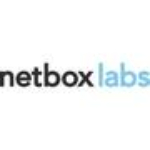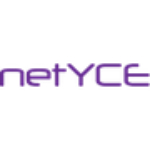
TechnologyCounter provides genuine, unbiased real user reviews to help buyers make informed decisions. We may earn a referral fee when you purchase through our links, at no extra cost to you.
List of 15 Best Network Automation Software
Showing 1 - 15 of 20 products
ManageEngine Network Configuration Manager
Software by ManageEngine.
Network Configuration Manager is a comprehensive solution for managing network configurations holistically. With features like backup, change management, compliance management, automation, and firmware vulnerability management, it simplifies network...Read ManageEngine Network Configuration Manager Reviews
SolarWinds NAM, a powerful network monitoring tool designed to help businesses efficiently manage their network infrastructure. With its advanced features interface, NAM provides real-time insights, alerting, and reporting, making it an essential too...Read SolarWinds NAM Reviews
Itential is a software solution that streamlines network automation processes for businesses of all sizes. With its user-friendly interface features, Itential revolutionizes the way organizations manage and monitor their networks. Experience seamless...Read Itential Reviews
BackBox is a and versatile operating system designed for ethical hacking and cybersecurity professionals. Renowned for its advanced security features and user-friendly interface, BackBox provides a reliable is a platform for conducting penetration te...Read BackBox Reviews
6connect is a software that allows you to easily manage and automate all aspects of your network infrastructure. With its user-friendly interface and powerful features, 6connect streamlines your network operations, saving you time and resources. Say...Read 6connect Reviews
IBM Cloud Pak for Network Automation is an innovative solution designed to revolutionize network automation through advanced technologies and streamlined processes. With its seamless integration and robust features, IBM Cloud Pak for Network Automati...Read IBM Cloud Pak for Network Automation Reviews
Juniper Paragon Automation, a revolutionary software designed to streamline and enhance network management processes. This advanced tool empowers businesses to optimize their network performance, improve efficiency, and reduce operational costs. With...Read Juniper Paragon Automation Reviews
Netbox Cloud is a cloud-based solution for your data management needs. With its intuitive interface and seamless integrations, Netbox Cloud allows you to effortlessly store, access, and analyze your data from anywhere, at any time. Say goodbye to tra...Read Netbox Cloud Reviews
Infoblox Cloud Network Automation, a powerful and innovative tool that streamlines and simplifies network management in the cloud. With its advanced capabilities and user-friendly interface, this software revolutionizes the way organizations handle n...Read Infoblox Cloud Network Automation Reviews
Kenmei Technologies is a leading software company that delivers innovative solutions for businesses of all sizes. With a focus on efficiency and effectiveness, our technology helps streamline processes and improve overall business performance. Our te...Read Kenmei Technologies Reviews
NetYCE is more than just software, its a powerful platform that simplifies and streamlines network management for modern businesses. With its intuitive user interface automation capabilities, NetYCE helps companies of all sizes achieve greater effici...Read NetYCE Reviews
Telia SD-WAN is a network solution that offers unmatched flexibility, security, and efficiency. With Telia SD-WAN, businesses can seamlessly connect their locations and manage their networks with ease, making it the perfect choice for modern and dyna...Read Telia SD-WAN Reviews
OpenText Network offers a dynamic and innovative platform for businesses to connect, collaborate, and streamline their communication efforts. With a user-friendly interface and robust features, OpenText Network is revolutionizing the way organization...Read OpenText Network Reviews
BlueCat Integrity is a software that is designed to ensure the security and stability of your network. This innovative tool uses advanced technology to provide you with real-time visibility and control over your networks infrastructure, helping you t...Read BlueCat Integrity Reviews
Cellwize is a leading provider of network automation and optimization solutions that empower mobile operators to enhance the performance and efficiency of their networks. By harnessing the power of artificial intelligence algorithms, Cellwize offers...Read Cellwize Reviews
- What Is Network Automation Software?
- Top Reasons Why Businesses Need Network Automation Software?
- What Are the Top Key Features of Network Automation Software?
- What Are the Top Benefits of Network Automation Software?
- What Are the Steps to Choose the Right Network Automation Software?
- What Are the Types of Network Automation Software for Different Industries?
- What Are the Technology Trends for Best Network Automation Software?
- What Are the Deployment Options for Network Automation Software?
What Is Network Automation Software?
Network automation software refers to a category of software specifically developed to facilitate the automation of diverse network-related operations.
The purpose of this system is to streamline the execution of various network management and maintenance operations, including modifying network settings and configurations, monitoring network activity, performing backups, and managing security upgrades.
The implementation of top network automation software has the potential to mitigate the extensive and monotonous manual tasks associated with network maintenance and operation, hence resulting in cost savings for organizations over an extended period.
Network automation tools commonly consist of several components, including scripts, user interfaces, and software development kits (SDKs). These components facilitate the automation of several tasks associated with network management. The scripts, for instance, offer guidance on automating diverse operations, such as configuring network setups or modifying network preferences.
The user interfaces facilitate the remote management of networks and enable access to the diverse features offered by the scripts. The software development kits (SDKs) facilitate the customization of software by developers to cater to their specific requirements.
The utilization of the best network automation software has the potential to mitigate periods of system unavailability, enhance dependability, and optimize operational procedures. This results in enhanced performance, expedited adoption of modifications, and decreased total cost of ownership (TCO).
Additionally, the automation of boring processes might assist system administrators in saving time, thereby allowing them to allocate their efforts toward more crucial work. The top network automation tools play a crucial role in establishing and maintaining a robust and secure data and network infrastructure.
Top Reasons Why Businesses Need Network Automation Software?
1. One potential strategy for enhancing operational efficiency involves the elimination of manual activities, allowing for the allocation of resources towards more valuable endeavors.
2. Facilitate expedited delivery of services and applications to the market.
3. The objective is to streamline information technology (IT) operations and enhance cooperation between IT professionals and business stakeholders.
4. One potential area for improvement involves enhancing the capacity to rapidly and precisely provision and configure network devices.
5. In order to enhance network performance, it is imperative to employ more efficient monitoring and analysis techniques.
6. One advantage of automated networks is their increased reliability and resilience, leading to a reduction in downtime.
7. One potential strategy for enhancing network security involves the implementation of sophisticated automation technologies.
8. One potential benefit is the enhancement of scalability and network control, as system administrators are afforded greater ease in configuring expansive or intricate networks.
9. Obtain statistics and insights pertaining to network performance in order to enhance visibility.
10. One potential objective is to implement automated systems that ensure adherence to business and industry norms and standards.
11. One potential strategy for enhancing document management and cooperation is the implementation of automated reporting systems.
12. Enhance customer service and happiness by implementing automated networks, which have been observed to result in improved performance and faster service delivery for end-users.
13. The streamlining of software updates and patching is recommended, as it allows for the automation and continuous monitoring of system modifications.
14. One potential approach to mitigating the occurrence of human error in the configuration and management of networks is to implement measures aimed at reducing such risks.
15. In order to enhance collaboration and expedite operations, it is recommended to consolidate all information technology (IT) management procedures onto a unified platform.
What Are the Top Key Features of Network Automation Software?
1. Automation Scripting: Automation scripting is a significant aspect of best network automation software, as it enables users to expeditiously generate scripts and programs for the purpose of automating a diverse array of network-related activities. These activities encompass the configuration of devices, the monitoring of performance, and the analysis of traffic.
2. Network Discovery: The process of network discovery is of utmost importance in the context of large-scale networks, as it serves the purpose of identifying and documenting alterations made to the network infrastructure.
Additionally, it streamlines the tasks associated with network troubleshooting and maintenance. The inclusion of network discovery functionalities provides users with the ability to efficiently ascertain the presence of devices within a network, hence streamlining the processes of network troubleshooting and maintenance.
3. Network Monitoring: Network monitoring tools enable users to effectively monitor the overall well-being and efficiency of their network infrastructure. These tools facilitate the identification of elements that generate substantial network traffic, measurement of bandwidth use, and detection of areas where performance is hindered.
4. Configuration Management: Configuration management is a process that monitors and controls the many channels utilized for network access. Its primary objective is to guarantee that all devices inside the network are consistently updated with the most recent software and services. Additionally, it aids in the reduction of network maintenance expenses.
5. Security: Network automation tools commonly include a collection of tools designed to enhance network security. These technologies have the potential to regulate access levels, establish firewall rules to safeguard networks against dangerous invasions, and activate encryption capabilities like VPNs to ensure data protection.
6. Reporting and Dashboards: The inclusion of report and dashboard tools enables users to build comprehensive reports that facilitate the measurement of performance and the analysis of traffic trends.
This process facilitates the identification of any underlying issues that may be present within the network and enables the efficient identification of problems, hence enabling prompt decision-making and implementation of corrective measures.
7. Automation Scheduling: The automation scheduling tool facilitates users in efficiently scheduling recurring chores. This technology facilitates the process of automating regular maintenance tasks, hence enhancing the operational efficiency of networks.
8. Auditing: Network auditing tools are utilized to observe and track modifications as well as establish configurations within a network. This feature facilitates the identification and resolution of issues by administrators, eliminating the need for manual examination of device logs.
9. Scalability: The ability to dynamically allocate resources in accordance with network requirements is a crucial feature of a network automation platform. This functionality allows users to conveniently add or remove devices and services as required.
10. Integration: The top network automation software packages have integration capabilities that enable users to identify and manage devices from various vendors and pre-existing network systems. This facilitates the optimization of the administration of extensive networks.
What Are the Top Benefits of Network Automation Software?
1. Increased Efficiency: The utilization of network automation software has the potential to enhance efficiency and optimize resource allocation by enabling the automation of repetitive processes, including provisioning and setups. The reduction in manual intervention leads to a corresponding decrease in the time and expenses involved with network automation projects.
2. Improved Visibility: The utilization of network automation tools has the potential to enhance network visibility through the provision of timely updates pertaining to alterations and patterns inside the network. This facilitates the network managers' capacity to promptly monitor and address possible concerns.
3. Increased Security: The implementation of automated network tasks has the potential to mitigate the occurrence of human error, hence enhancing the overall security of the network. Automation tools can effectively regulate access and uphold security regulations.
4. Cost Savings: The utilization of a network automation platform has the potential to decrease operating costs by eliminating the necessity for manual intervention. Automation has the potential to decrease overall labor costs by eliminating unnecessary work positions.
5. Scalability: The scalability of automation software enables it to effectively adapt to the dynamic requirements of the network. Automation can also facilitate the synchronization of changes across numerous network parts.
6. Improved Productivity: Automation enables network administrators and engineers to allocate their time and efforts towards activities that contribute value and align with strategic objectives, rather than being consumed by routine and manual duties. Consequently, there can be a substantial boost in their production.
7. Improved Reliability: The best network automation software plays a crucial role in optimizing the performance of extensive, intricate, and dispersed networks through the utilization of automated monitoring and reporting tools. This approach has the potential to mitigate network downtime and minimize service disruptions.
What Are the Steps to Choose the Right Network Automation Software?
1. Identify your needs: Develop a comprehensive comprehension of the specific objectives and problems pertaining to network automation inside your firm. When evaluating various factors, it is important to take into account operating needs, scalability requirements, budgetary constraints, as well as installation and maintenance expenses.
2. Evaluate potential products: Investigate the characteristics and advantages of diverse software solutions that are now accessible in the market for network automation.
It is advisable to evaluate and compare items offered by various sellers, ensuring that they possess the essential qualities required to fulfill one's specific requirements.
3. Consider implementation and costs: The objective is to ascertain the financial implications associated with the implementation, maintenance, and support of the best network automation software.
When making decisions, it is important to take into account several elements such as hardware requirements, the number of users, and anticipated modifications to the existing infrastructure.
4. Test and assess: Conducting software testing prior to making a purchase is of utmost importance. Please initiate communication with the vendor to request product demonstrations and any supplementary details that may enhance your comprehension of the software's functionalities and constraints.
After determining the most suitable top network automation software for your firm, it is imperative to do a comprehensive evaluation of the vendor's reputation, customer service, and support. Conducting thorough due diligence in this domain will guarantee the acquisition of the most suitable product to fulfill your network automation requirements.
What Are the Types of Network Automation Software for Different Industries?
The diversity of network automation software is contingent upon the specific sectors, as it is influenced by the varying networks and systems employed within each industry.
In the realm of network automation, it is commonly acknowledged that there exist three primary categories of software.
1. Automation frameworks: The aforementioned frameworks, including Ansible, Puppet, and Chef, serve as platforms that facilitate the automation of many network tasks, encompassing activities such as patch management, system configuration, network usage reporting, and monitoring.
2. Network provisioning systems: The aforementioned solutions, namely HP Network Automation, Nokia Network OnBoarding, and Cisco Prime Provisioning, serve the purpose of enhancing efficiency and automation in network setup and service provisioning. This is achieved through the utilization of pre-established templates and configuration scripts.
3. Network Orchestrators: Systems like as Huawei eSight and Juniper Junos Space offer mechanisms for automating the control of various network components, encompassing routers, switches, servers, and application delivery, during the whole installation process.
What Are the Technology Trends for Best Network Automation Software?
Automated configuration management has emerged as a prominent technology trend within network automation software. In recent years, there has been a growing trend in the use of this practice due to its potential to streamline the management of network setups, resulting in time and effort savings.
Automated configuration management systems offer administrators a broad array of tools to effectively manage and verify configuration modifications inside an IT environment, hence reducing the need for manual intervention. Another emerging trend in the field of best network automation software involves the incorporation of orchestration and automation functionalities.
This process aids in the optimization of network modifications and has the potential to significantly diminish the duration and intricacy associated with network upkeep. Orchestration offers a structured approach to automating network operations, employing software to manage and oversee processes within a distributed setting.
This enables the network to promptly adapt to dynamic circumstances. In recent times, there has been a noticeable rise in the incorporation of cloud functionalities into top network automation software. The utilization of cloud technologies facilitates the utilization of a distant infrastructure, allowing for the orchestration and automation of several services operating on the cloud.
This enables the attainment of enhanced scalability, cost-effectiveness, and security measures. The rapid evolution of various technologies and trends necessitates the increasing significance of network automation platform inside business operations.
The use of this solution has the potential to yield cost reductions, enhance network availability, and eliminate the need for manual intervention in network maintenance.
What Are the Deployment Options for Network Automation Software?
Deployment options for network automation software include:
1. Cloud-based: The utilization of cloud-based solutions for network automation or orchestration is gaining popularity due to its inherent advantages, such as the ability to efficiently manage and automate expansive networks from any location, while also providing seamless scalability.
2. On-premise: The act of implementing the program directly onto the servers of an organisation provides a heightened level of authority over the organization's IT infrastructure. However, the expenses associated with hardware, upkeep, and enhancements may vary based on the specific requirements of the enterprise.
3. Virtualized: The utilization of software in a virtualized setting offers advantages in terms of flexible resource allocation, the ability to scale operations, and cost-effectiveness. However, it is important to note that the implementation of such an environment may necessitate investments in infrastructure to provide the necessary platforms.














